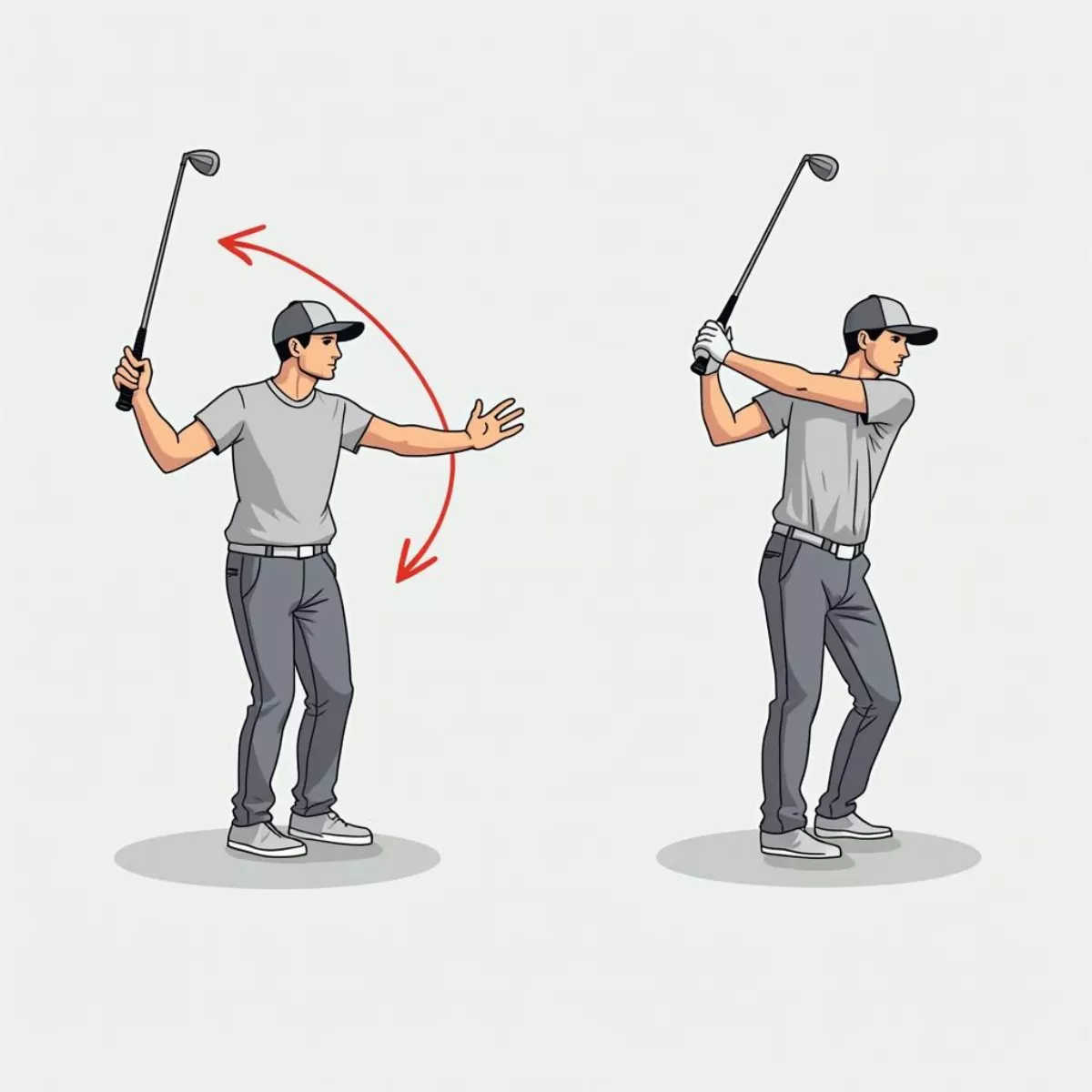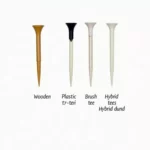If you’re reading this, chances are you’ve experienced the frustrating phenomenon known as a snap hook. Maybe you’ve seen your ball veer dramatically left (for right-handed golfers) off the fairway and into the rough. While a snap hook can feel like the golf gods are conspiring against you, understanding its causes can help elevate your game. So, let’s break it down in a friendly, conversational manner!
What is a Snap Hook?
Before we dive into the nitty-gritty, let’s clarify what a snap hook is. A snap hook is a severe leftward shot trajectory (for right-handed golfers) resulting in your ball curving excessively to the left. This is often caused by a combination of swing mechanics and clubface alignment.
Key Characteristics of a Snap Hook:
- Severe Left Turn: The ball dramatically veers left.
- Distance: Often occurs with longer clubs, like drivers and fairway woods.
- Ball Flight: Characterized by a low trajectory and a hooking spin.
Causes of a Snap Hook
Understanding what causes a snap hook is essential to correcting the issue. Below are the common culprits, broken down into easy-to-understand sections.
1. Closed Clubface at Impact
A primary reason for a snap hook is a closed clubface at impact. When the clubface is pointed left relative to your target line, it imparts a leftward spin on the ball.
- Clubface Alignment: Make sure that your clubface is square to your target at address and impact.
- Grip Pressure: An overly strong grip can close the clubface. Aim for moderate pressure during your grip.
2. Out-to-In Swing Path
An out-to-in swing path means that you are swinging your club outside the target line on the backswing and coming down inside the target line. This motion typically results in side spin and can lead to a snap hook.
- Swing Drill: Practice inside-out swings by imagining a box you’re trying to hit the ball out of. This will help train proper mechanics.
- Alignment Rods: Use alignment rods during practice to visualize your swing path.
 Golfer Swing Path Illustration
Golfer Swing Path Illustration
3. Poor Setup and Stance
Your setup can significantly impact your swing and shot result. An improper stance or alignment might encourage the snap hook.
- Feet Alignment: Ensure your feet are parallel to the target line. A closed stance can promote a snap hook.
- Ball Position: If the ball is too far back in your stance, it can lead to a closed clubface at impact.
4. Overactive Hands and Wrists
An excessive use of your hands and wrists during the swing can lead to a snap hook as well. When golfers try to actively close the clubface through impact, it often results in too much leftward spin.
- Relaxation: Focus on relaxing your hands. If you find yourself forcing the shot, take a moment to regain composure.
- Smooth Transition: Work on a smooth transition from backswing to downswing. Your hands should follow your body’s movement.
5. Too Much Speed, Too Little Control
Trying to hit the ball too hard can often result in loss of control—especially with the driver. Erratic speeds can create misalignments and poor contact, leading to a snap hook.
- Controlled Swing: Focus on your tempo rather than sheer power. Consistency can improve your ball flight.
- Practice with Purpose: During practice, aim for steady swings rather than maximum distance.
 Golfer Hitting Driver With Speed
Golfer Hitting Driver With Speed
6. Tension and Mental Game
Lastly, the mental aspect of golf shouldn’t be overlooked. If you’re tense or anxious, it can reflect in your swing and lead to a snap hook.
- Breathing Exercises: Before a shot, take deep breaths to calm your nerves and loosen your body.
- Visualization: Picture your ideal shot before taking it. This can help you execute your swing with confidence.
Tips to Prevent a Snap Hook
Here’s a handy list of tips to help you avoid snapping that hook:
- Check Your Grip: Ensure your grip isn’t too strong.
- Focus on Alignment: Pay close attention to your setup and stance.
- Practice Your Swing Path: Use drills to encourage an inside-out swing.
- Stay Relaxed: Release tension in your hands and arms.
- Control Your Speed: Focus on a smooth, controlled swing.
Key Takeaways
To wrap things up, here’s a summary of the essential tips when dealing with a snap hook:
- Identify the Cause: Analyze your clubface alignment, swing path, and setup to pinpoint the issue.
- Practice Proper Techniques: Regularly practice alignment, grip, and smooth swing transitions.
- Relax and Focus: Maintain a calm mindset to help control your swing.
 Golfer Analyzing Swing On Range
Golfer Analyzing Swing On Range
FAQ Section
Here are some frequently asked questions regarding snap hooks:
1. What is the difference between a snap hook and a regular hook?
The main difference is the severity of the curve. A snap hook typically travels an extreme left trajectory (for right-handers), while a regular hook has less curvature.
2. Can a snap hook happen with any club?
Yes, it can occur with any club, but it’s most common with drivers or woods due to their longer shafts.
3. What drills can help fix a snap hook?
Some effective drills include the fade drill, swinging with alignment rods, and practicing the inside-out motion to create a more controlled swing path.
4. Is a snap hook more common among beginners?
While beginners might experience snap hooks more often due to improper mechanics, even experienced golfers can occasionally struggle with it.
5. How can I tell if my clubface is closed at impact?
Using video analysis can be beneficial. Record your swing and watch the clubface position at impact to see if it’s closed.
6. Should I adjust my grip to fix a snap hook?
Yes, adjusting your grip to ensure it’s not too strong can help in preventing the clubface from closing at impact.
7. Can equipment affect a snap hook?
Yes, the type of club and shaft can affect your swing. Make sure your equipment is suited to your swing style.
8. Is there a specific body posture to avoid a snap hook?
Maintaining a relaxed, athletic posture can prevent excessive tension that leads to bad swings.
9. Should I consult a professional if I can’t fix my snap hook?
Absolutely! A professional golf instructor can help identify specific issues with your swing and provide tailored advice.
10. Will practicing on a range help remove a snap hook?
Yes, consistent practice at a driving range can help you work through swing mechanics and reinforce good habits.
Conclusion
Understanding the causes of a snap hook can greatly improve your game. By focusing on proper mechanics, staying relaxed, and practicing regularly, you’ll be well on your way to playing a smoother, more controlled round of golf. Remember, every golfer experiences challenges, but the key is to learn and grow from them. Happy golfing!

